09. Networks of Discourse
Using Network Mapping to Examine the Influence of Institutional Histories and Program Missions on Students’ Writing Development
In January 2017, the presidents of the College of Charleston (CofC) and Trident Technical College held a joint press conference to announce the launch of the Charleston Bridge Program, a new “one-of-a-kind” bridge program between the two schools (Price, 2017). The Charleston Bridge Program would be similar to other bridge programs across the country in that both institutions would partner to offer social and academic programming that assists underprepared students who transfer from a two- to four-year institution. Students admitted to the Charleston Bridge would be admitted as Trident students who would live in CofC’s dorm facilities and take classes on CofC’s campus. Bridge students’ courses, however, would be Trident Tech courses taught by Trident faculty. After one semester in the Charleston Bridge, students would be admitted to CofC if they earned a 2.6 GPA. If admitted, transfer students would be provided additional academic support during their first two semesters at CofC. According to the then-president of CofC, the program provided an opportunity for CofC to more fully realize its identity as a public liberal arts and sciences institution: “The College takes its public mission quite seriously and this new Bridge program will allow us to carry out that mission in a more expansive and dynamic way” (qtd in Price, 2017). Trident’s president framed the new program as taking “the partnership between the two institutions to a ‘new level’” (Price, 2017).
As writing studies specialists committed to increasing students’ access to higher education, we were excited by the potential of this program to provide access to higher ed among more of South Carolina’s high school graduates. At the same time, we viewed the claims made in the press release with some skepticism and had concerns about its impact on CofC’s first-year writing curriculum. Thus, in August 2017, we began to research the Charleston Bridge Program (hereafter referred to as the Bridge) and its effects on student learning, a project that involved the analysis of historical materials held in CofC’s archives, program materials, and research of Bridge students’ literacy histories and learning. 1 We conducted analysis of this research by producing a network map which allowed us to code our collected data and trace relationships among our data to see how institutional cultures, institutional histories, writing program outcomes, and writing program pedagogy shape student learning (Fig. 1). To resolve issues of legibility of the map, we have created an interactive version of the map.
In this chapter we discuss our process creating the map by first describing our exigence for the project: the initial concerns we had as writing studies faculty invested in students’ successful transfer to CofC and students’ transfer of learning. We then provide a brief review of literature and methodology that oriented our approach to the making of our network map as part of institutional critique. Then, we discuss how we analyzed the network map to make recommendations to administration through what we identified as actionable nodes—specific places in the visual where links emerged or failed to emerge to suggest successful learning transfer. And finally, we suggest what value such visuals may have for others, especially in institutional contexts where visuals like the one we discuss here may not be sufficient evidence for institutional critique and change. Before turning toward those tasks, we want to first provide some further context for the map and its purpose, and we want to offer a preview of the findings we will discuss later in the chapter.
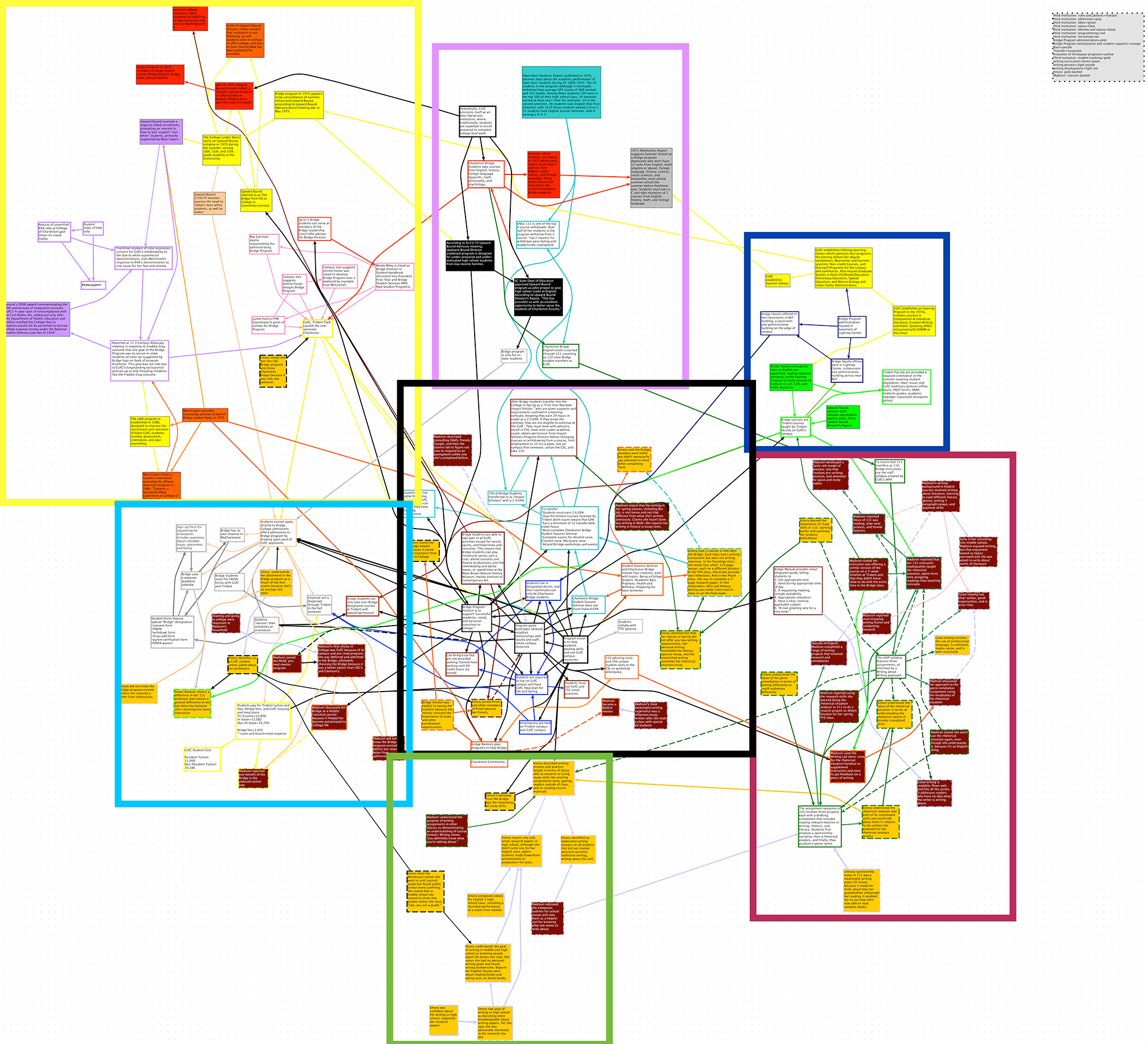
Figure 1. The complete network map in organic layout, with clusters arranged based on the number of connections among nodes. An interactive version is available.
As part of a research methodology, our production of the map was largely inventive and part of our research process, not meant to serve as a standalone text that could be shared with administration. In other words, our map allowed us to develop “hyper-local, narrative-based accounts” of learning and institutionality (Mueller, 2018, p. 8). It was a means of analyzing data we had collected for ourselves. Through this process of data collection and mapping-as-analysis, we traced, most prominently, the relationships between students’ writing in the Bridge’s first-year writing (FYW) program and their literacy histories. We also traced the relationships between institutional histories and the Bridge program’s mission and vision to “build a supportive peer network, establish relationships with college faculty and staff, and utilize campus resources” as well as “help students develop skills” (Fig. 2).

Figure 2. Nodes in the map related specifically to the mission and goals of the Bridge program.
As writing studies scholars, our most significant finding, however, was the incongruence between FYW program’s goals (Fig. 3) and the Bridge’s mission and vision (Fig. 2). Specifically, through the production of this visual as part of an actionable institutional critique project (Adler-Kassner, 2008; Lamos, 2012; Porter et al., 2000), we found that while the Bridge program’s mission and vision statements were at the center of much of the network (Fig. 2), these pieces of discourse also drowned out the pedagogical outcomes of the FYW course’s transfer-focused, writing about writing (WAW) approach to teaching writing (Fig. 3). Visually, the centrality of the Bridge’s mission is indicated by the number of links developed between the mission and other nodes, and the de-emphasis of the FYW program’s pedagogy is denoted by both the lack of links and the presence of dashed links that signify contradiction and contrast between two pieces of data.

Figure 3. Nodes in the map related specifically to the pedagogical focus of the FYW course.
For students, this meant that the Bridge program made salient the importance of skill-building, peer networks, and campus resources, but because of the prominence of those features of the Bridge, students did not see how their experience in the Bridge’s FYW course functioned differently than the rest of the Bridge program—as anything other than skill-building. Our research indicated that the prominence of the Bridge’s goal thus negated the pedagogical goal of a WAW approach as moving beyond the study of writing as “a basic, universal skill” to “a discipline with content knowledge to which students should be introduced, thereby changing their understandings about writing and thus changing the ways they write” (Downs and Wardle, 2007, p. 553). This tension between skill and knowledge, the Bridge’s and FYW’s outcomes, became the most important revelation of the map and the most important actional node in our network of analysis.
Exigences for the Composition of the Map
When we began our examination of CofC’s and Trident’s one-semester bridge program, we felt especially motivated by a range of questions and concerns commonly taken up as part of institutional critique research. To start, we questioned the brevity of the program and were unsure as to how a one-semester bridge program would deliver on its promise to better prepare students for transfer to CofC especially given its short timeframe. We questioned the sustainability of the Bridge because CofC and Trident had partnered to offer previous bridge programs, some more successful than others, since at least the 1970s. In those past iterations, issues of space and identity seemed to undermine the bridge program’s general mission of providing students time and support to acclimate to CofC both socially and academically. Institutional lore indicated that past bridge students, rather than belonging to the larger campus community, felt isolated from the rest of the student body. We were concerned about the replication of those effects in the current Bridge, especially because Bridge students were put in classroom buildings that were distant from where, for example, other FYW classes at CofC met.
The College has throughout its history struggled to create a campus environment supportive of diverse groups of students, and we questioned how the Bridge would contribute to CofC’s ongoing diversity efforts, especially when increasing the diversity of the student population seemed to be an unstated, rather than explicit, goal of the Bridge program. To provide some statistics, according to CofC’s census data, in fall 2018 CofC enrolled 9,880 students, 77% of whom identified as white, 7.9% as Black or African American, 5.7% as Hispanic. The Bridge program class that same semester, which totaled 163 students, was more diverse, with 61.35% of Bridge students identifying as white, 20.25% as Black or African American, and 9.20% as Hispanic. Students enrolled in the fall 2018 Bridge earned on average a total SAT score of over a hundred points below the average score for that year’s incoming class. With few campus resources aimed at assisting underprepared students, due in part to the state legislature’s mandate that remedial courses be offered only at two-year institutions, we wondered how the Bridge would support students’ learning after their successful transfer to CofC.
Finally, we were concerned about how the pedagogical and institutional mismatch between Trident’s FYW program and CofC’s would impact students’ learning, especially when CofC’s administration asked us to coordinate with Trident on creating a new writing course for the Bridge, ENGL111: Advanced Academic Writing, within a month of the public announcement of the program’s launch. All of the students enrolled in CofC’s FYW courses have the benefit of class sizes capped at 20 and process pedagogy delivered over a 16-week semester. Further, the majority of students’ learning is focused through a WAW pedagogy to better facilitate students’ transfer of learning. Almost in direct contrast, sections of Trident’s FYW program are significantly larger with seat counts at 35, expedited in 10-week semesters, and focused on the study of literature and grammar. Because ENGL111 would be taught by Trident faculty, who were not given funds or time for professional development to learn an approach to teaching writing different from that used on Trident’s campus, we were also concerned about the possible negative effects on student learning that these issues of labor, institutional dissimilarity, and pedagogical incongruence might create. And ultimately, given all of these issues, we wondered how well the new program would facilitate students’ transfer to CofC and their transfer of writing knowledge.
Conducting Actionable Institutional Critique Through Network Mapping
Given our interest in how institutional cultures and histories were shaping Bridge students’ learning, we turned to theories of institutional critique to help frame our work. Steve Lamos (2012) defines institutional critique in writing studies as an effort “to analyze and to reform the complex and often problematic institutional spaces, both academic and nonacademic, in which writing, language, and literacy instruction occurs” (p. 158). Although institutional critique can take different forms, the ultimate goal of such research is to bring positive change to an institution. As Porter et al. (2000) argue, an important way institutional critique can affect such change is through spatial analysis: “Institutional change requires attention to the material and spatial conditions of disciplinary practices inside a particular institution” (p. 620). We found institutional critique a valuable method for our project because its emphasis on change reminded us that the purpose of our research was to identify actionable data that could be used by administrators, teachers, students, and others in the program to bring possible needed reform to the Bridge program and to the institutions that contribute to it. We concluded that institutional critique also offered us tools for understanding how material and physical spaces shaped students’ learning, something we found especially relevant given the third space nature of the Bridge program (e.g., the Trident faculty who taught Bridge courses had office space at CofC and students were officially designated as Trident students even though they took classes and lived on CofC’s campus).
To conceptualize this particular institutional critique project, we turned to research in digital rhetoric to conceptualize how the Bridge program and larger institutional cultures influence or shape students’ learning. Specifically, Jeff Rice’s (2012) Digital Detroit proved useful for conceptualizing our institutional space as layered and interlinked pieces of information that generate meaning (p. 20). Additionally, Rice’s exploration of networked places and spaces also informed our mapmaking, particularly his emphasis on arrangement as a means of rhetorical invention: “How a rhetor puts ideas, people, places, and things into relationship with one another is how one, in general, invents” (p. 31). For our project, Rice’s examination of space and his construction of networked space informed our more multimodal approach to the representation of spatial networks through visual nodes and links.
Informed by the emphasis placed on action within institutional critique as well as our interest in networked institutional spaces, we began collecting multiple data sets. Focusing on the cultural-historical and the spatial, we collected archival materials about CofC’s institutional history and past bridge programs, information about classrooms and faculty offices, and campus maps. Focusing on stories told about writing (Adler-Kassner, 2008), we collected Bridge marketing materials and policy documents and began recording institutional lore about the Bridge program. This part of our research included the gathering of press releases, admission letters, the student handbook, and other program materials. We also sampled course proposals, meeting minutes, and correspondence from CofC and Trident sources and tracked references to the Bridge program in the local major newspaper, alternative weekly publications, campus publications, and social media feeds from student organizations. And through archival research, we gathered memos, internal reports, and other materials from CofC archives pertaining to previous bridging programs since CofC became a state institution in 1968.
To trace how these issues of space, narrative, and history might be shaping students’ experiences in the Bridge’s FYW program, we also surveyed ENGL111 students about their writing experiences and conducted a series of three interviews with two students who volunteered to participate further in the study. The first interview focused on students’ educational histories and their prior writing development; in the second, students answered questions about what they learned in ENGL111; in the third, students discussed their future writing plans and the perceived impact of the bridge program. These students also shared a collection of artifacts with us: the writing they completed in ENGL111 and the syllabi from their courses in the semester after the Bridge program.
Building the Network for Analysis
We entered this data using the network modeling platform yEd, which we selected after experimenting with several other programs. When constructing the map, we created nodes to denote pieces of information and coded each node according to its theme. Themes are denoted by the color of a node’s outer boundary and the color and transparency of the node’s background. Drawing on Rice’s notion of interconnection and arrangement as invention, we then linked individual nodes using the same codes and color scheme as those used to build individual nodes. Links are based on general relationships between information. Solid lines denote complementary pieces of information like congruence between a policy and practice or a shared theme like race as related to different moments of institutional history. In contrast, dashed lines denote contrast or contradiction between pieces of information like a practice or moment of learning that does not reflect the goals of the Bridge program. Elsewhere, dashed lines also indicate where student responses are being connected to an institutional or programmatic node. Student-based connections are indicated with dashed lines in maroon and gold.
For example, shared codes like recruiting policies and practices (tan), admissions policies and practices (gray), institutional identity and values (black), and writing/writing process (light purple) culminated in this small section of the map (Fig. 4) indicating that Emory knew her low test scores—and not her writing—both placed her in the Bridge and blocked her from being admitted to CofC.

Figure 4. Example set of interconnected nodes focusing on the relationship between admissions, institutional practices, and one student's understanding of their admissions decision.
This particular arrangement of nodes suggests that it is part of CofC’s institutional identity to accept excellent students and that Bridge students are often reminded that their status at CofC is different than students of CofC.Like other freeware tools designed for cluster mapping, yEd offered a way to represent the data we had collected about current and past iterations of the Bridge program through individual nodes that we could then link with several options for color, weight, and line-type.

Figure 5. One possible arrangement generated from the set of arrangement options in the yED platform.
And like other programs, links between those modes could be created to give rise to clusters, but unlike cluster mapping programs which rely solely on the writer’s arrangement of modes, yEd allowed us to create multiple arrangements, thus affording multiple options of displaying the network to make different patterns visible (Figs. 5 and 6).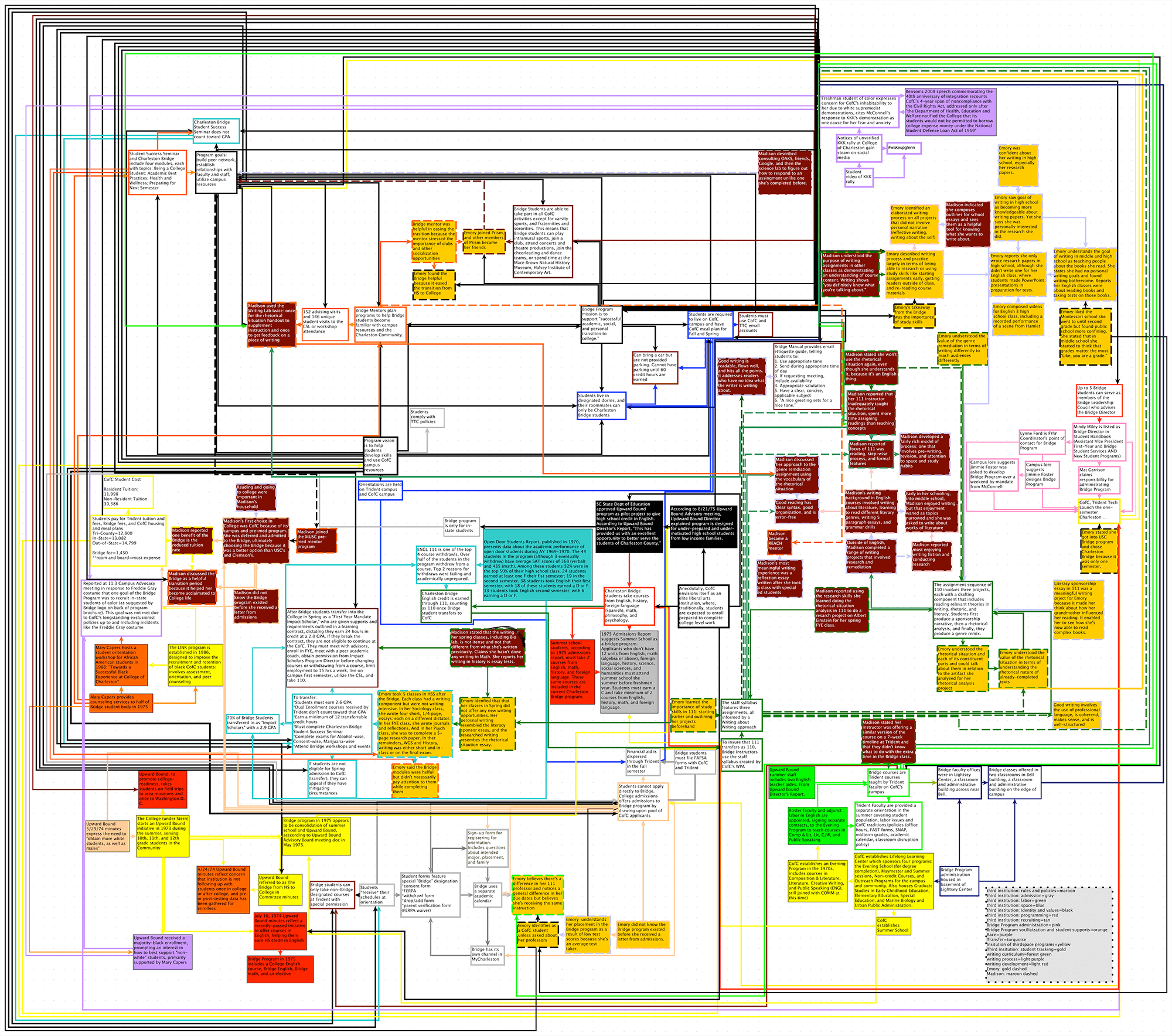
Figure 6. Another possible arrangement of the map generated in the yED platform.
After experimenting with several arrangements, we chose to use the program’s organic layout option because it renders the network based on the number of links between nodes, creating close proximity among nodes based on the number of links between those nodes (Fig. 1). Through this arrangement, we identified seven general clusters or patterns where a multitude of connections could be traced back to a central or particularly connected node (Fig. 7).
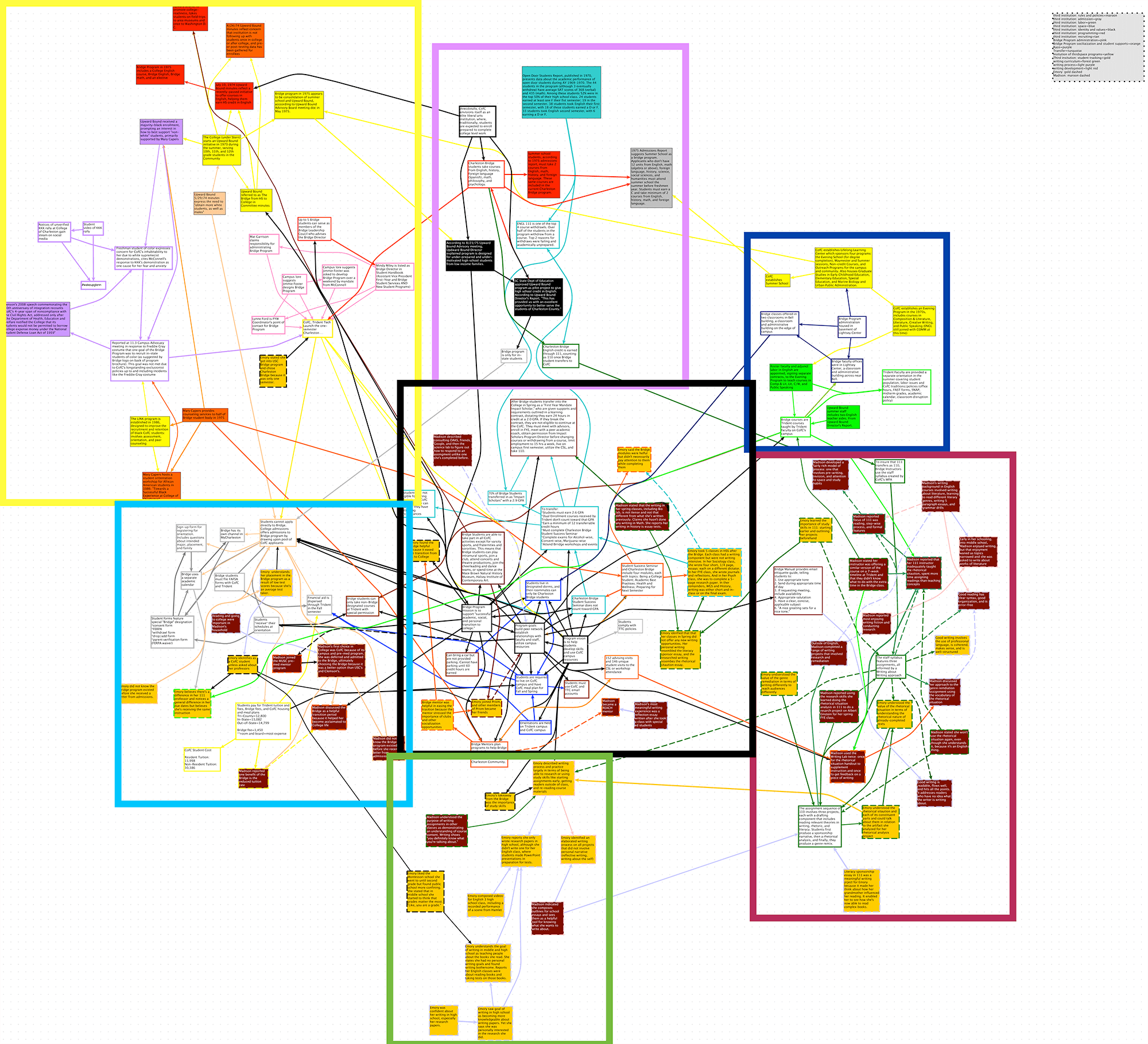
Figure 7. The network map (Fig. 1) annotated to reflect the seven clusters made visible by yEd’s organic arrangement.
These seven clusters represented to us instances of discursive activity yielding crucial information about how the Bridge program’s history informed its present; how the program’s mission played out in the idealized curriculum imagined by syllabi, assignments, and other course materials, as well as in the actualized curriculum experienced by students; and how the Bridge program, its students, and its faculty were positioned in relation to other programs, offices, and people at CofC. These clusters further helped us visualize how CofC’s racist legacy—the school went private in 1949 to resist integration and admitted Black students in 1967, due in part to financial pressures of not complying with elements of the Civil Rights Act—shaped the discourse around the Bridge program. The top-left corner of the map enclosed in a yellow box (Fig. 8) has nodes connecting CofC’s past exclusion of Black students and the concerns expressed by current-day students about the racism they experience on campus to CofC’s and Trident’s joint announcement about the program. These connections help show how CofC’s history and its contemporary struggles to address institutional racism may have prevented the Bridge program from achieving its diversity goals, which in fact was a view expressed at a public meeting discussing CofC’s response to a racist Halloween costume worn by a student.
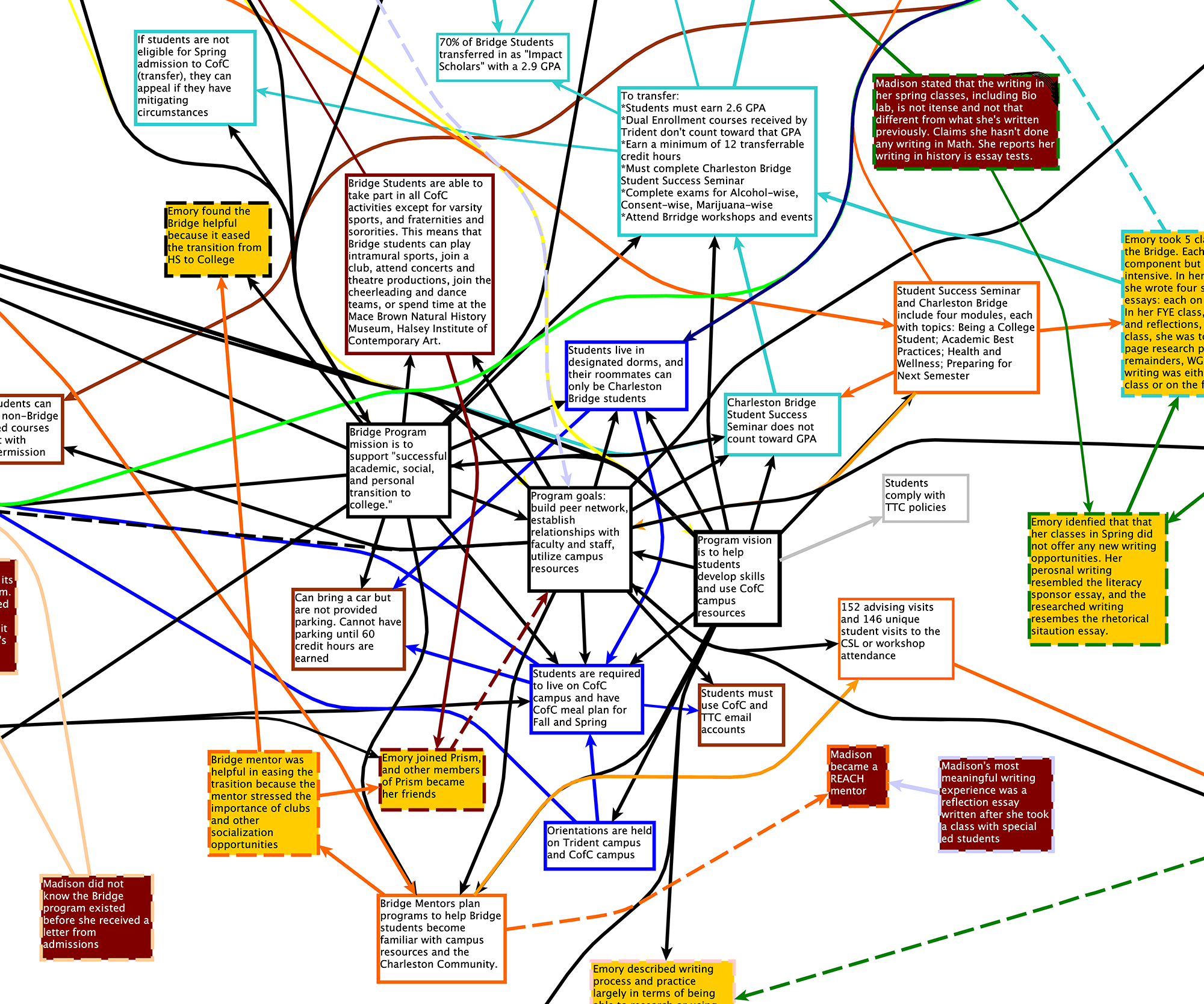
Figure 8. The cluster of nodes all focused around the Bridge program's mission and goals. The cluster includes program policies and practices, student experiences, and specific pieces of information about the Bridge program's curriculum.
In our examination of the map, two clusters were primarily of interest to us: the Bridge’s mission and vision cluster (Fig. 8) and the FYW cluster (Fig. 9). Figure 8, or the Bridge mission and goals cluster, illustrates the predominance of the Bridge program’s mission and goals, both emphasizing study skills, campus resources, and socialization. The number of links connecting nodes related to student experience, program policy, program structure, and admissions policies indicates the centrality of the Bridge’s goals and mission to other parts of the map. Most prominent, perhaps, is how student responses about their campus life and study skills reflect the Bridge’s central focus and mission. Missing from this cluster is any consideration of writing beyond a skills-based activity used to test content learned in other classes (history, science, psychology, sociology). Figure 9, or the writing cluster emphasizes the relative disconnectedness among nodes related to writing. Although links are present, many of those links are dashed, indicating contradictions and dissimilarities between two pieces of information. For instance, Madison's discussion of her experience in ENGL111, particularly her stepwise model of process and her understanding of effective writing as being largely about clarity and the absence of error, shows that her experience in ENGL111 did little to change her understanding of writing. Similarly, Emory noted that her important takeaway from ENGL111 related to study skills, particularly time management. This cluster also indicates that consideration of writing is relatively absent from other pieces of information included in the map, especially where the Bridge’s mission and goals are concerned. The one exception where writing is considered as a feature of the Bridge program is where the Bridge’s student manual discusses the importance of email etiquette. Thus, while we were pleased to see that the Bridge’s mission and vision were at the center of institutional policies like students’ ability to participate in all on-campus activities except for varsity sports and practices like students’ frequent meetings with mentors, we were surprised to see how disconnected the mission and vision cluster was from the ENGL111 cluster.
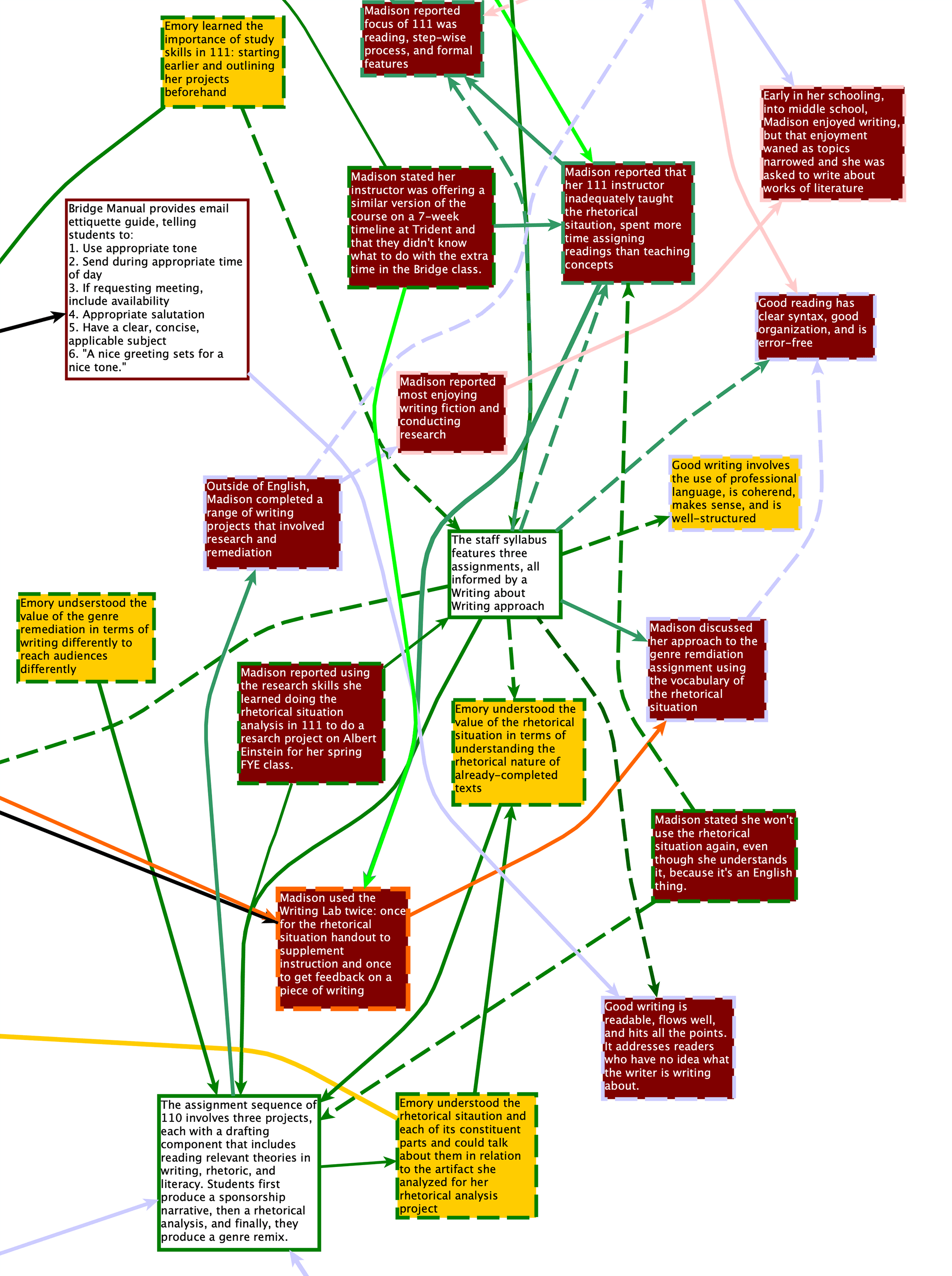
Figure 9. The cluster indicating relationships between ENGL111, student experiences in that class, and the WAW pedagogical focus of the CoC's FYW program.
Through closer analysis, we found that among the few pieces of data where these two clusters were linked, the mission and vision was always emphasized above the goals of the WAW curriculum—to learn about writing as a context-dependent and rhetorical activity. In one case, Madison articulated that “good writing is readable, flows well, and hits all the points” (Fig. 8) which is both consistent with the email etiquette section of the Bridge manual and somewhat at odds with the emphasis on context and genre that Madison was learning in ENGL111. In the second case, Emory noted that the valuable takeaway for her from ENGL111 was the importance of study skills: “starting her projects earlier and outlining her projects beforehand” (Fig. 9). This, too, was more consistent with the Bridge program’s vision to “help students develop study skills” (Fig. 8) and was at odds with the pedagogy of their ENGL111 classroom. To put it differently, where there were connections between ENGL111 and the Bridge program, those connections prioritized the Bridge program and left out the pedagogical goals of the WAW classroom that had already been successfully piloted in CofC’s 110 classrooms. Due to the salience of the Bridge program’s mission, it seems that the learning outcomes of ENGL111 were drowned out, giving the impression to students that their work in ENGL111 was strictly skill-building and not the study of writing as both knowledge and practice.
Using the Map to Institute Change
Aware that our analysis of the Bridge program would not by itself produce meaningful institutional changes, we shared the findings from the network map with CofC’s Associate Vice President for the Academic Experience (hereafter referred to as AVP). We identified her as our point of contact because we had worked with her office previously on developing convocation events, a campus-wide reading series for incoming students, and other initiatives related to first-year programming. In addition, the Center for Student Learning, New Student Programs, and other college units that contribute to the Bridge program report to the AVP office. The current AVP has been a long-time ally of CofC’s FYW program and listened seriously to our concerns about the Bridge program as we coordinated with Trident faculty to develop ENGL111. When discussing with her our plans for mapping the Bridge program, we made her aware of our interest in institutional critique while also pitching our research as an opportunity for us to provide her office with important data they could use to assess the Bridge program.
We sent the Associate Vice Provost a slide deck distilling particular parts of the map, providing information about the seven actionable nodes discussed earlier along with three recommendations emerging from these actionable nodes. We suggested future iterations of the Bridge program provide students the option to apply directly to the Bridge, rather than the current process whereby students apply to CofC and receive information that they have been denied admission to CofC but are invited to join the Bridge program. Giving students the option of applying directly to the Bridge, we argued, would address concerns expressed by our student informants that their invitation to the Bridge left them confused, because they were unaware of the program, and reinforced negative attitudes they had about themselves as students and writers. Given student informants’ comments about how their involvement in clubs and other extracurriculars assisted their transition to and persistence at CofC, we further suggested that promotional materials be revised so that students were made more aware of these opportunities and how they contribute to students’ success.
The actionable nodes we focus on in this chapter led us to recommend that the student handbook and other program materials be revised to present a more coherent message about how the practice of writing, as well as what students learn about the rhetorical situation and genre in ENGL111, contributes to the Bridge’s mission and assists students’ transfer to CofC. Currently, the only explicit reference to writing in the student handbook is a section that instructs students on “Email Etiquette 101.” Despite this page’s goal of helping students communicate effectively with professors, its title, as well as its location in the handbook (it comes immediately before a section on the student code of conduct), undercuts the pedagogy in ENGL111 by suggesting that writing successfully is a matter of conforming to rigidly defined forms with strict rules. The AVP was persuaded by our presentation and has invited us to collaborate with the Assistant Vice President of First-Year and Bridge Student Services on instituting the suggested changes to the handbook.
While we believe the map played a role in persuading the AVP to revise the handbook and promotional materials, we recognize that factors such as our long-term relationship with the AVP, and the goodwill we accrued through assisting her office with previous efforts not related to the Bridge program, also contributed to our rhetoric and enabled us to present our findings to her in the visual form of a network map, as opposed to a more conventional proposal. In other words, we were fortunate that the map could stand as a product of research and an argument for institutional change. We therefore don’t want to suggest that network maps such as the one we created are tools that can, by themselves, convince different stakeholders at different institutions. Nonetheless, we believe our process creating the map has implications beyond CofC’s and Trident’s Bridge program.
We argue that a mapping project like the one we describe can serve as a valuable method of organic writing assessment that, like dynamic criteria mapping (Broad, 2003), can complement or serve as an alternative to outcomes-based assessment. Whereas dynamic criteria mapping is frequently used as a method for collectively developing meaningful learning outcomes, network mapping can be a way for WPAs, faculty, and other stakeholders to develop research and assessment questions based on the unique and sometimes-competing features of local institutional contexts. As we mentioned earlier, we began this project with broad questions about how labor, space, and other material and institutional conditions were shaping students’ learning and writing in a newly formed bridge program, but it was only through the process of building the network that we were able to see the prominent and wide-reaching influence of the Bridge’s mission and how it interfered with what our student-informants were learning about writing in ENGL111.
While we were to be able to show this map as evidence of needed institutional change to our administration, we also recognize that different administrative bodies at different institutional types may not view a visual like the one we produced as a valid or valuable product of research. Thus, we also observe that network mapping as we have described here may serve as a productive starting point for research to develop focused research questions. In our own case, the finding we discuss here regarding the incongruence between ENGL111’s pedagogical goals and the Bridge program mission more narrowly defined research questions that speak more broadly to the relationships between labor, course goals, and program outcomes. We wondered, for example, how the Bridge mission impacted students’ learning in other Bridge course offerings, including Spanish, math, and astronomy. If the prominence of skills or another aspect of the Bridge mission showed up in those classrooms in ways that resembled the crowding out of writing knowledge in ENGL111, this would suggest a need for a different approach to conveying how individual disciplines contribute to the Bridge program as well as the liberal arts curriculum writ large.
Just like the discussion and representation of the map in this chapter, the map itself is also incomplete. Our mapping only happened during the 2017–2018 academic year and was limited to two students and their experiences. Since then, the Bridge program has accepted a new class of students and has seen the successful transition of Bridge students into CofC. There have also been a range of institutional events like the retirement of a president, the appointment of an interim president, and the hiring of a new president. Thus, this map, like institutional life, is ongoing in a space of hesitancy, anxiety, and confidence—among other emotions and affects—that shapes policy, practice, and language. Our examination of a particular institutional space and attempt to trace its efficacy and influences as part of a longer institutional history and broader institutional culture suggests that discourse reverberates throughout institutions shaping—for good and ill—students’ learning in ways that are often unintended during initial program design. Employing methods like network mapping provide a means and a vantage point to identify and trace the reverberations of discourse throughout institutions.
1. The research presented in this chapter is Institutional Review Board (IRB) approved (protocol application IRB-2017-09-15-103919). Student participants in their consent forms were asked whether we could quote them in future publications and presentations, and, if so, whether they preferred we use their first names or pseudonyms. The students analyzed in this chapter granted us permission to quote them. In accordance with their naming preferences, we refer to them by their first names. ↩